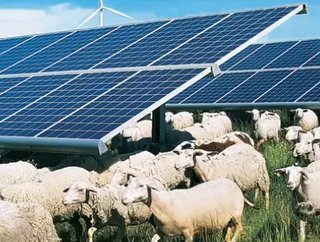The growing links between solar PV and agriculture

Solar power needs space and agriculture requires sustainable revenues. Little wonder then, that the links between both industries are strengthening.
The number of new solar farms planned for the east of England has more than doubled in recent months as farmers decide to swap crops for clean energy, according to a recent report, and it's been a similar story in the US and elsewhere.
Indian farmers can control water and electricity supply through solar water pumps (click here) and Enel Green Power Australia, a subsidiary of Italian energy giant Enel, is exploring how to combine solar PV generation and agricultural production in a new research program in northern Victoria (click here).
The global installed capacity of agrivoltaics, or the co-development of the same area of land for both solar power and agriculture, has grown rapidly from about 5MW in 2012 to approximately 2,900MW in 2020 - and the potential is huge.
Renewable energy producer Boralex and pioneer of agrivoltaism company Sun’Agri are joining forces to develop agrivoltaics in France and Europe by designing new solar power plants that help protect farms from increasingly challenging weather conditions. With this year’s intense spring frosts that impacted French crops, it has become more relevant than ever to provide new solutions to farmers, such as agrivoltaics, as they adapt their methods to our changing climate.
Through the use of solar louvres designed and programmed to meet plants’ ideal conditions, agrivoltaics can help manage available sunlight or shade, thereby increasing crop quality and quantity. "Together, we’ll carry out agrivoltaic projects that contribute to improved agriculture in Europe,” said Nicolas Wolff, Vice-President and Managing Director, Boralex Europe.
The top three land covers associated with greatest solar PV power potential are croplands, grasslands and wetlands, according to Nature research, and solar panels are most productive with plentiful insolation, light winds, moderate temperatures and low humidity.
These are the same conditions that are best for agricultural crops, and vegetation has been shown to be most efficient at using available water under mesic conditions where atmospheric evaporative demand is balanced by precipitation supply.
And in a sustainable-minded age, here is some startling food for thought: global energy demand would be offset by solar production if even less than 1% of cropland were converted to an agrivoltaic system.
While most solar panels stand around 3 ft above ground, solar panels located on agrivoltaic sites need to be installed at greater heights to allow for adequate sunlight to reach the vegetation underneath and allow farm equipment to navigate easily.
Researchers have successfully grown aloe vera, tomatoes, biogas maize, pasture grass, and lettuce in agrivoltaic experiments. Some varieties of lettuce produce greater yields in shade than under full sunlight; other varieties produce essentially the same yield under an open sky and under PV panels. Semi-transparent PV panels open additional opportunities for colocation and greenhouse production, the Nature research paper adds.
Despite the gradual reduction in the level of support under both the Feed-In Tariffs and Renewables Obligation schemes, solar PV continues to offer a typical return on investment of around 10% to farmers, according to the National Union of Farmers.
Three main kinds of PV systems are popular, requiring different levels of investment and development consent:
- PV panels mounted on top of existing roofs, or integrated into new roofs and buildings
- Ground-mounted panels deployed on unplanted areas, e.g. around field margins
- Large arrays of panels deployed across entire fields
Typically, developers and installers require about 2 hectares of land (5 acres) per megawatt of power, with most solar farms ranging from 0.5 MW to 15MW in scale, and a few larger projects on low-grade or brownfield land of 30-50MW.
With the global solar boom underway, fuelled by net zero targets and 70% fall in prices over the last decade, opportunities for closer collaboration are plentiful.






